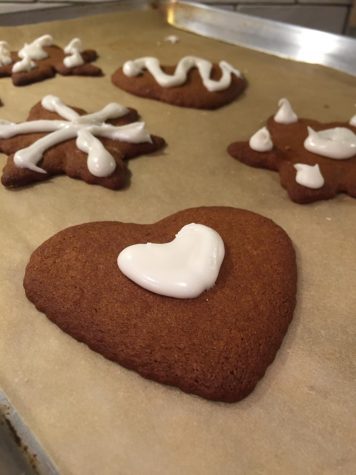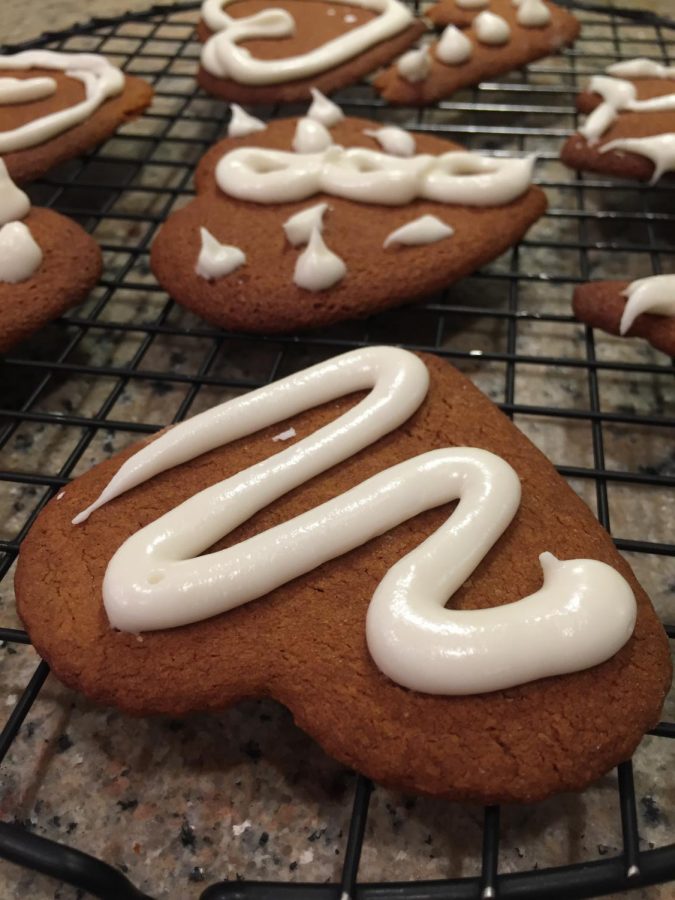Gingerbread Cookies
January 3, 2018
Gingerbread cookies, or the kind we recognize today as emblems of the holiday season, became a tradition in Medieval Europe. They were popular among royalty–Elizabeth I was one of the first to popularize human shapes: she had miniature versions of visiting foreign dignitaries made, decorated with gold leaf. The cookies quickly trickled down to the lower classes, and remained symbols of elegance and luxury. The first gingerbread houses were made in Germany, and immortalized by the tale of Hansel and Gretel in 1812. These became extremely popular in the colonies–Europeans settlers brought the tradition with them to the New World. The first American cookbook Amelia Simmons’s American Cookery has numerous versions of gingerbread. Interestingly, molasses, found in most gingerbread recipes today, became a popular ingredient in the colonies, as it was much cheaper than sugar.
Christmas is the only time of year my family eats gingerbread cookies. Something about saving them for this one holiday makes them more special–it’s the same thing with my grandmother’s molasses cookies and the William Sonoma’s Peppermint Bark.
I’ve eaten my fair share of gingerbread, but until this year I had never actually made the cookies myself. They are surprisingly simple to make and really fun to shape and decorate. I made hearts, trees, and snowflakes, but you can also roll the dough into thin logs and make words and letters (my grandma showed me how to make initials this way with some of the leftover dough a few days later).
The first step for this recipe is to melt the shortening, brown sugar, and molasses and bring back to room temp. Once cooled, baking soda and a little bit of water are added, starting a chemical reaction akin to a mini science fair volcano. The baking soda (sodium bicarbonate, or NaHCO3) is a base, and the molasses is slightly acidic. When the two are combined in the melted liquid medium, they react to form CO2 salt and water (acid base neutralization). **Make sure to melt and combine these initial ingredients in a large pan to prevent the contents from foaming over.
The rest of the dough-making process is relatively simple. All that’s left to do once you combine the dry ingredients, and set aside the dough to rest for a few hours, is to make the royal icing. Simply beat egg whites and vanilla until very stiff peaks form (see this link for an explanation), then add the powdered sugar until you get the right thick, slightly glossy consistency.
The recipe for the gingerbread base was adapted from this recipe from the Times, and the icing from Alton’s Brown’s recipe on the Food Network website.
Ingredients:
The Dough:
1 cup light brown sugar
1 cup light molasses
1 cup vegetable shortening
1 tbsp. baking soda
1 egg
¼ tsp salt
2 tsps baking powder
1 tbsp ground ginger
½ tsp ground cinnamon
4 generous cups all-purpose flour, more for rolling
The Icing:
3 ounces egg whites (approximately 2 large eggs)
1 tsp vanilla
4 cups confectioner’s sugar
Preparation:
1. Combine sugar, molasses and vegetable shortening in a large pan and melt on low heat until all components are completely dissolved. Remove from heat.
2. Add ¼ cup water and the baking soda to the mixture and stir vigorously. Allow mixture to come to room temperature.
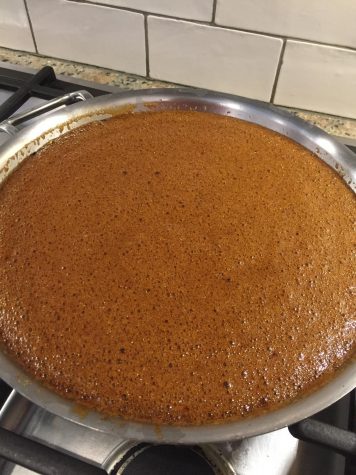
3. In the bowl of a mixer, combine the egg, salt, ginger, cinnamon, and baking powder. Add in the cooled mixture from the previous step and mix well. Add the flour cup by cup.
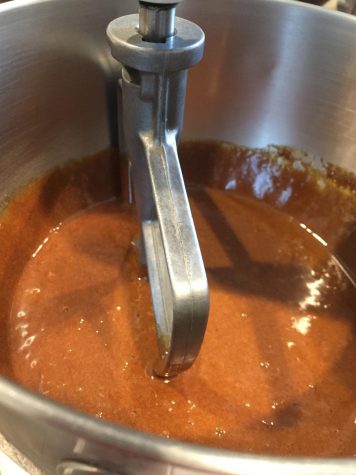
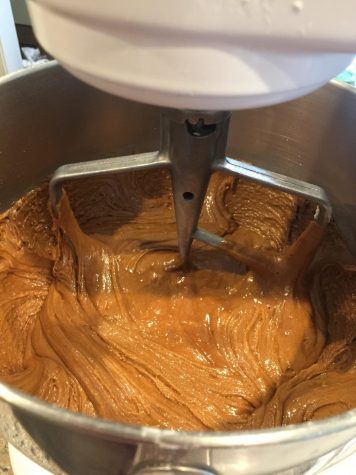
4. Place the dough in the refrigerator for a few hours (at least 2).
5. When ready to bake, preheat the oven to 350°. In the bowl of a mixer, combine the egg whites and vanilla. Beat on high until stiff peaks form.
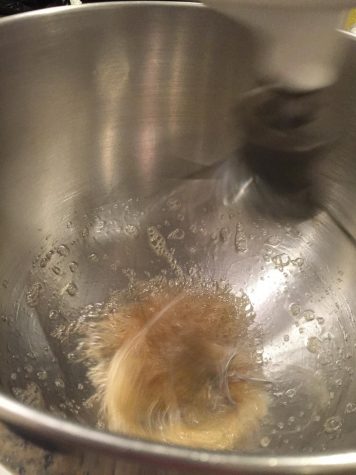
6. Mix in the confectioner’s sugar. The final product should be a viscous, glossy icing. If too runny, add more confectioners’ sugar. If too dull, try adding a bit of corn syrup.
7. Transfer icing to a piping bag, or a plastic bag with the corner cut off.
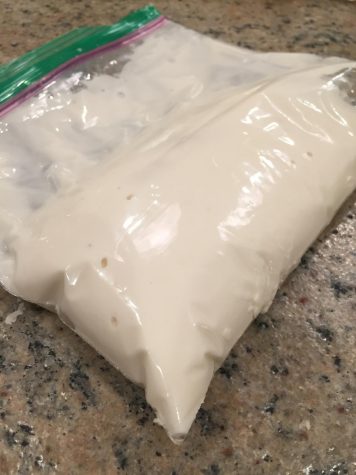
8. Roll out the dough on a floured surface to about a ¼ inch thickness. Cut into desired shapes and lay onto parchment paper-lined baking trays.
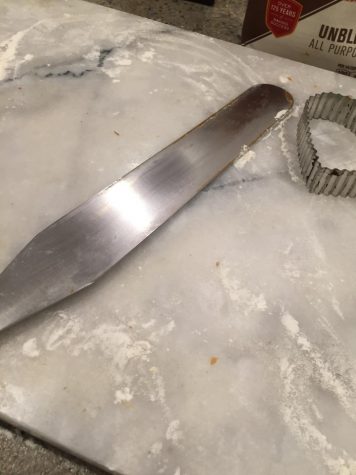
9. Bake 9-10 minutes, or until edges just begin to brown. Allow cookies to come to room temp as icing rests.
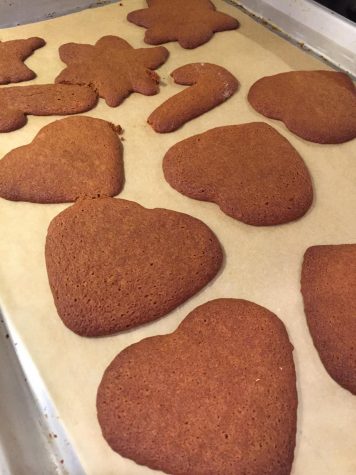
10. Ice cookies and enjoy.
